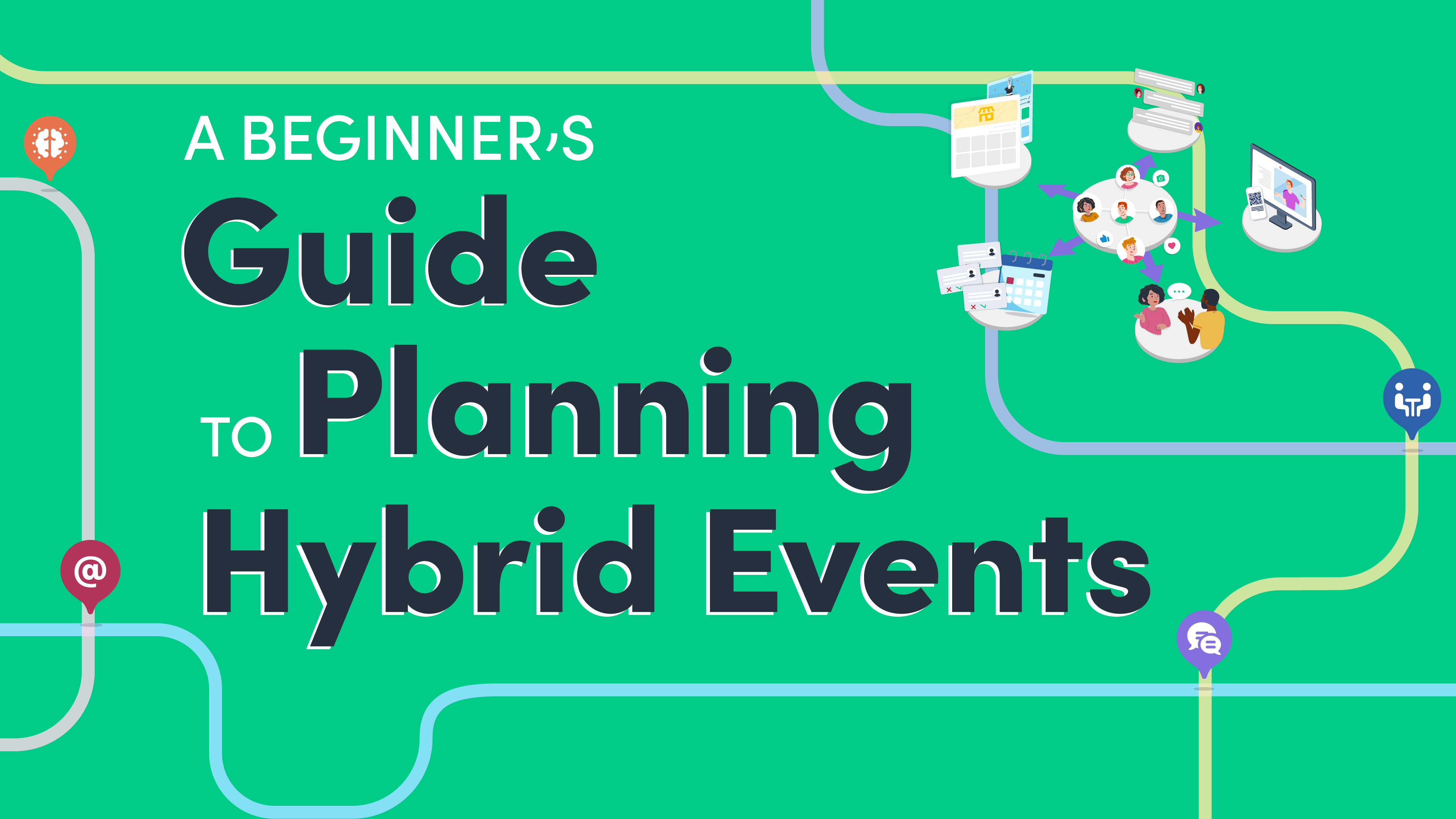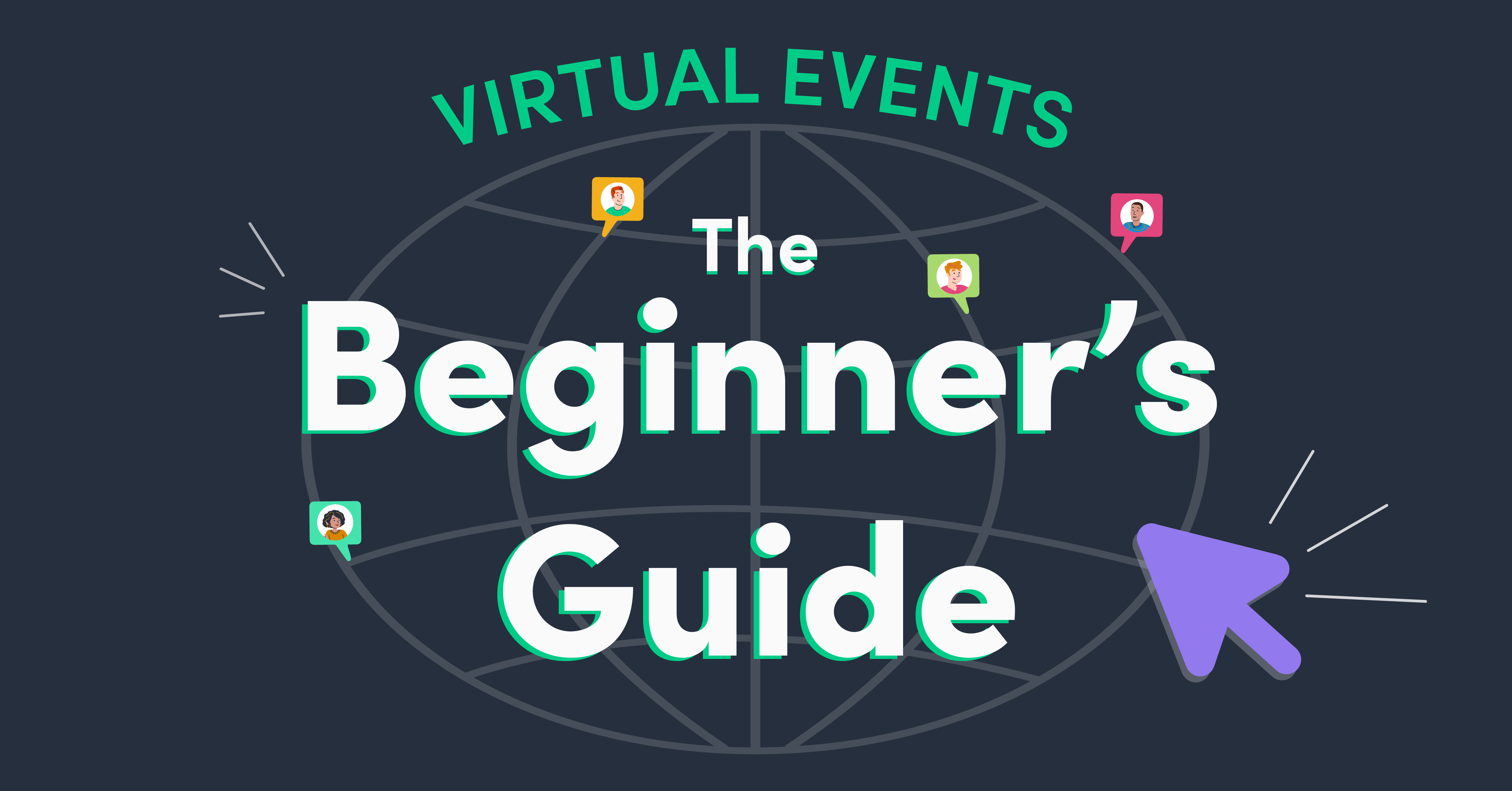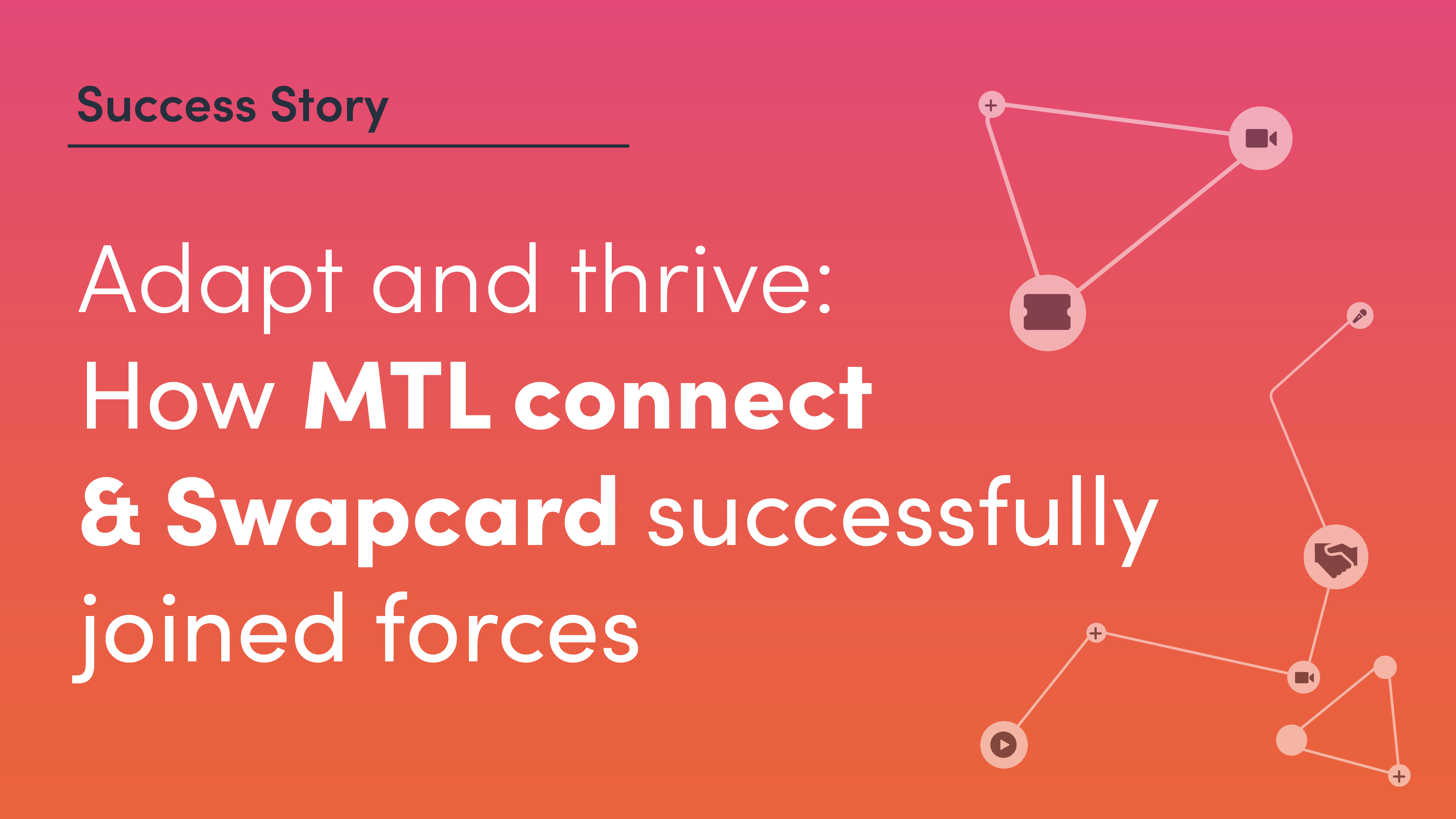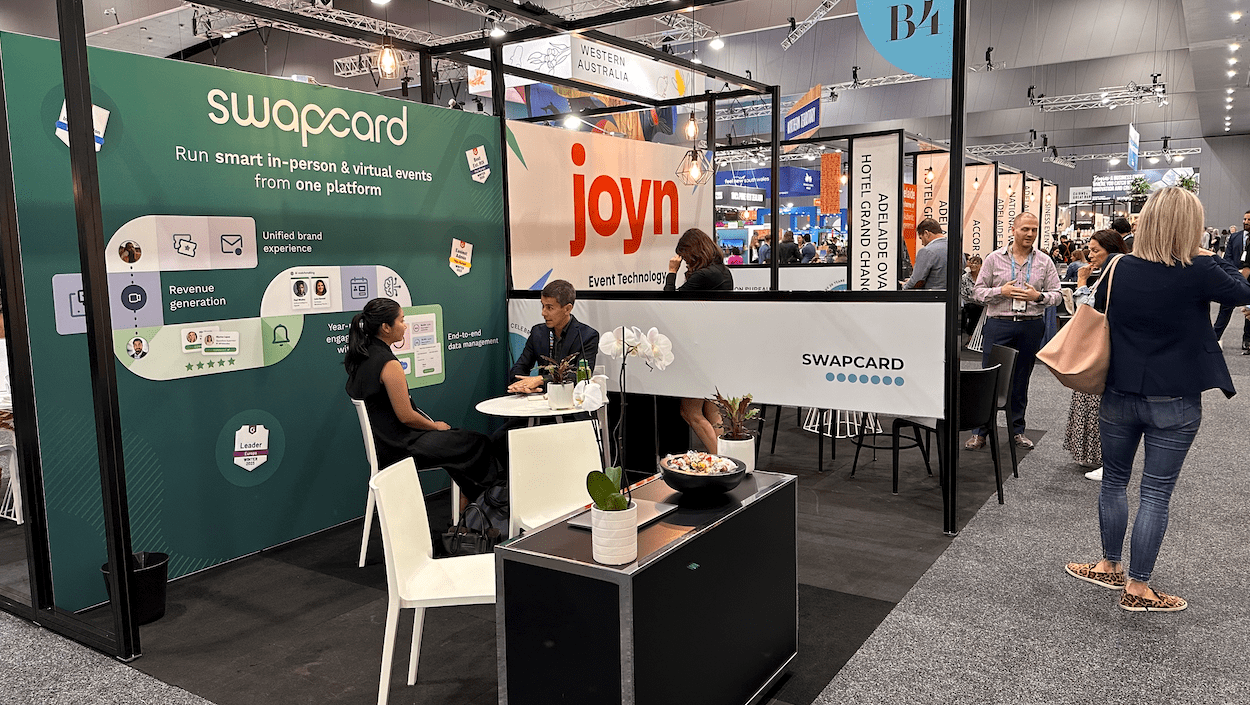Overnight, combining digital and in-person experiences became necessary - no longer just for tech enthusiasts or early adopters. In 2021, event attendees and sponsors expect a blend of in-person and digital experiences and resources. That means event planners must consider how to keep online attendees fully engaged behind their computer screens, without sacrificing the factors that make in-person events worth the extra expense and travel.
In this post, we’ll cover what it takes to have a successful hybrid event in 2021 and beyond. Let’s start with the basics.
What is a hybrid event?
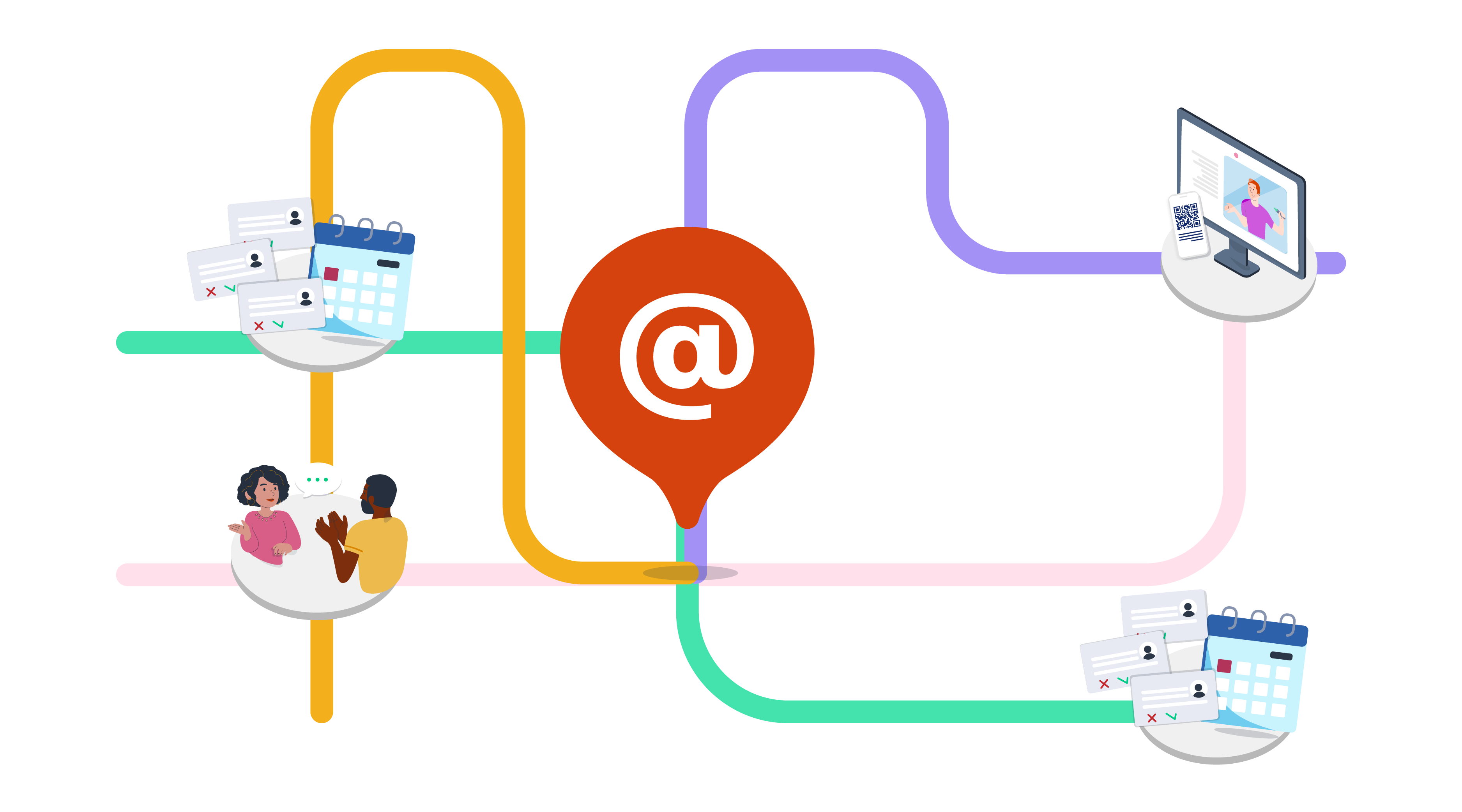
Hybrid events blend the best of in-person and digital events into a single experience. When done right, a hybrid event empowers all attendees to network, shop, and hear their favorite speakers. Meanwhile, hybrid events must give sponsors opportunities to reach their target audience—through screens and person-to-person interactions—to gain feedback or close sales.
In other words, you must keep everybody happy, whether you’re trying to satisfy a sponsor at their booth or a digital attendee watching from their couch a thousand miles away.
Hybrid events existed before 2020. But back then, they were the exception, not the rule. Today, hybrid events have become the industry standard. And most event planners are still trying to figure out how to host them successfully.
The global pandemic forced event companies to go fully online in 2020. As more people receive vaccinations and the world slowly opens back up in 2021, event attendees and sponsors are divided down the middle. Some people are itching to finally leave their homes and attend live, while others prefer attending from the comfort of their homes. The solution to meeting everyone’s needs is hosting events that combine digital and physical experiences.
Different types of hybrid events

The reality is, any event you can host in real life can be a hybrid event. You can host conferences, trade shows, internal meetings, company Happy Hours—you name it. In fact, you can host a hybrid event without even knowing it.
Rather than thinking about what type of event to host, consider which elements of your event should be hybrid, and how you’re going to make sure that digital attendees don’t feel overlooked or left out from the event. Achieving this requires intention and careful planning.
The key is engagement. One-way conversations, in which online attendees simply watch your conference like a webinar, is not ideal. Memorable experiences and true relationships are formed when engagement flows both ways. In practice, this can mean creating an online community where people interact with speakers through a chat. It can mean hybrid event networking Happy Hours and games where online and in-person attendees can meet one another and exchange contact information.
The point is to make attendance an active (not passive!) experience for all attendees.
How to monetize hybrid events
 Here are three ways to monetize your hybrid event.
Here are three ways to monetize your hybrid event.
Tiered pricing
Hybrid events are best monetized using multiple levels of cost and access. Not all attendees need the same level of engagement. Here’s a simple way to think about the breakdown in pricing:
- The most expensive tickets provide the best of both in-person and digital perks.
- Middle-tier options may involve certain in-person perks, while providing mostly a digital experience.
- The lowest-cost tier should be exclusively digital, such as a recorded or live digital viewing of certain talks and access to online chat rooms.
You may even consider going with a freemium model to help with marketing. In this case, you can offer certain sessions for free to digital viewers. If people like what they see, they may pay to register for the full event—or attend your next conference.
A good experience goes a long way.
Moving from events to a 365-day community
Many of us lose business cards a day or two after we receive them. Often, we forget the important lessons learned in our favorite keynote as soon as we return back to work. One of the drawbacks of events is that they occur in a flash, here one day and gone the next. The good news is, lately that’s been changing.
With hybrid events, conference attendees can join online communities that allow people to stay in contact, revisit conference sessions, and provide accountability—long after the event is over. One cost-effective way to charge more for hybrid event tickets is to offer attendees a 365 community.
A 365-day community is an online group that allows attendees to remain in contact with people from the conference up to a year after the event concludes. In your community, you can make recorded sessions available for repeat viewing and encourage ongoing conversations and networking.
365 communities can be held in many forms. Facebook groups and Slack channels are easy solutions that use familiar platforms. There is also software made specifically for hosting community groups like MemberPress, Wishlist Member, and Thinkific.
The best part for hybrid event organizers is, 365 communities double as a powerful marketing tactic for your next conference. Since many of your attendees are active in a community under your control, you can broadcast information about other upcoming events to the community to sell tickets, find sponsors, and build hype before the next big day.
Sponsored sessions
Give your sponsors more than just ad space. Give them the stage—or the screen. One way to monetize events is to have opportunities for sponsors to interact and engage with the attendees. The key here is to make sure sponsors truly get maximum ROI from the event.
After all, they’re paying for it.
How to boost networking at hybrid events
-png.png) One of the most important functions of any event is networking. For many attendees and sponsors, meeting the right person is their top priority.
One of the most important functions of any event is networking. For many attendees and sponsors, meeting the right person is their top priority.
The best part of hybrid events is that you can leverage technology to spur both in-person and digital connections. Networking is easier in hybrid events because attendees and sponsors get the benefit of at least two engagement models: online and face to face.
Here are just a handful of ways to boost networking at hybrid events.
- Make space for one-on-one conversations: Hybrid events aren’t simply one-way webinars. In your itinerary, make space for one-on-one and group breakout sessions to make sure everyone has a chance to meet fellow attendees.
- Connect like-interest people and businesses: For many event attendees, the difference between a successful conference day and a flop is the people they meet at the event. Swapcard uses AI to matchmake people of similar interests. How will you make sure the right people meet?
- Break the ice: Create games, feed people ice-breaker questions, or give attendees specific topics to discuss between one another. If you can help people get past merely saying “Hello,” you can help them achieve the goals that brought them to your conference in the first place.
- Make it easy to stay in touch: Even in-person attendees might hesitate to collect a dozen business cards. Finding a simple, digital form of connection allows hybrid event attendees to exchange contact information easily, without leaving out people at home or cluttering the pockets and purses of in-person attendees.
How to engage audiences during hybrid events?
Event organizers must keep up with at least four different levels of hybrid event engagement:
- How to engage in-person attendees
- How to engage online attendees
- Where to blend online and in-person experiences
- How to give sponsors opportunities to engage with both in-person and online attendees
If any one of these factors is an afterthought, a large segment of your event attendees will feel ignored and underappreciated. They probably won’t return again next year. The goal is to exceed everyone’s expectations, which means focusing on the needs of these different segments.
How will you give in-person attendees an unforgettable conference experience that’s worth the travel and additional expense?
How will you keep remote attendees responsive and engaged so that networking, Q&As, and other common conference perks aren’t just for live attendees?
And how will you help sponsors truly connect with the leads they’re looking for so they achieve a positive ROI?
These are the primary challenges you must solve as a hybrid event organizer. And the truth is, usually only one thing separates successful hybrid events from everything else...
The secret ingredient behind every successful hybrid event is your tech stack
At hybrid events, tech isn’t just for the viewers at home. Your tech stack must enable in-person and digital registration. Speakers should be able to interact with at-home viewers as easily as they can speak with live attendees. And networking needs to work equally well for people standing 6 feet or 10,000 miles apart.
That means thinking beyond Zoom conferences. You need a hybrid event platform, app, or tool suite that every sponsor and attendee uses during the event.
Swapcard, for example, allows you to handle registration in the app for all attendees. The built-in matchmaking tool makes it easy for attendees and sponsors to connect with the people and organizations they’re interested in—no matter the distance.
At-home attendees can view programs from their preferred device. In-person attendees can use the app to review the event schedule, participate in online conversations, and access event-related resources.
As a hybrid event planner, you have a lot on your plate. The good news is, the core factors behind any successful event—like finding talented speakers, securing sponsors, marketing the conference, and keeping everyone inspired from start to finish—are skills you already carry in your toolbelt. If anyone can host a successful hybrid event, it’s you.
And if you need a little help, we created Swapcard to make your job a little bit easier.
